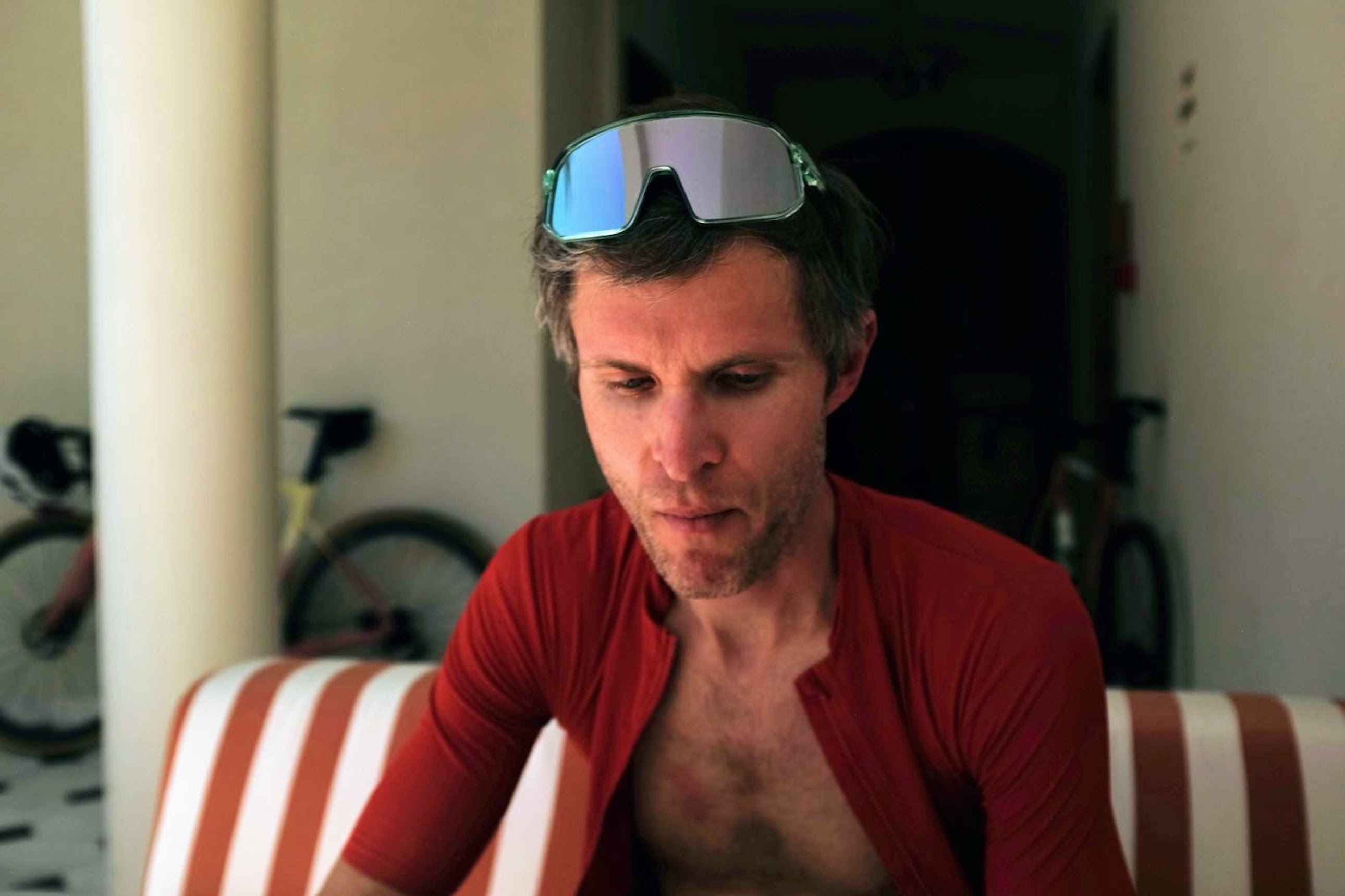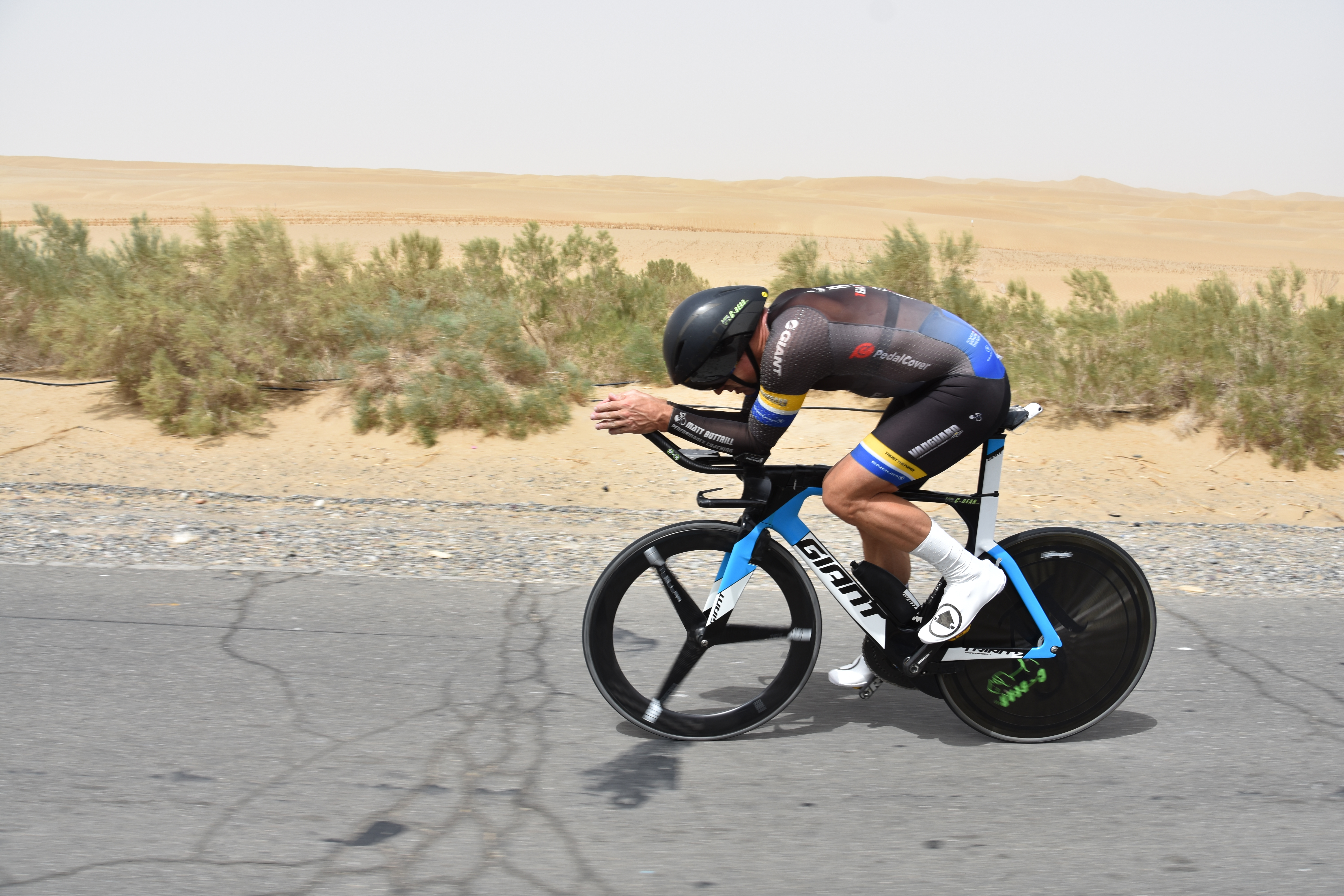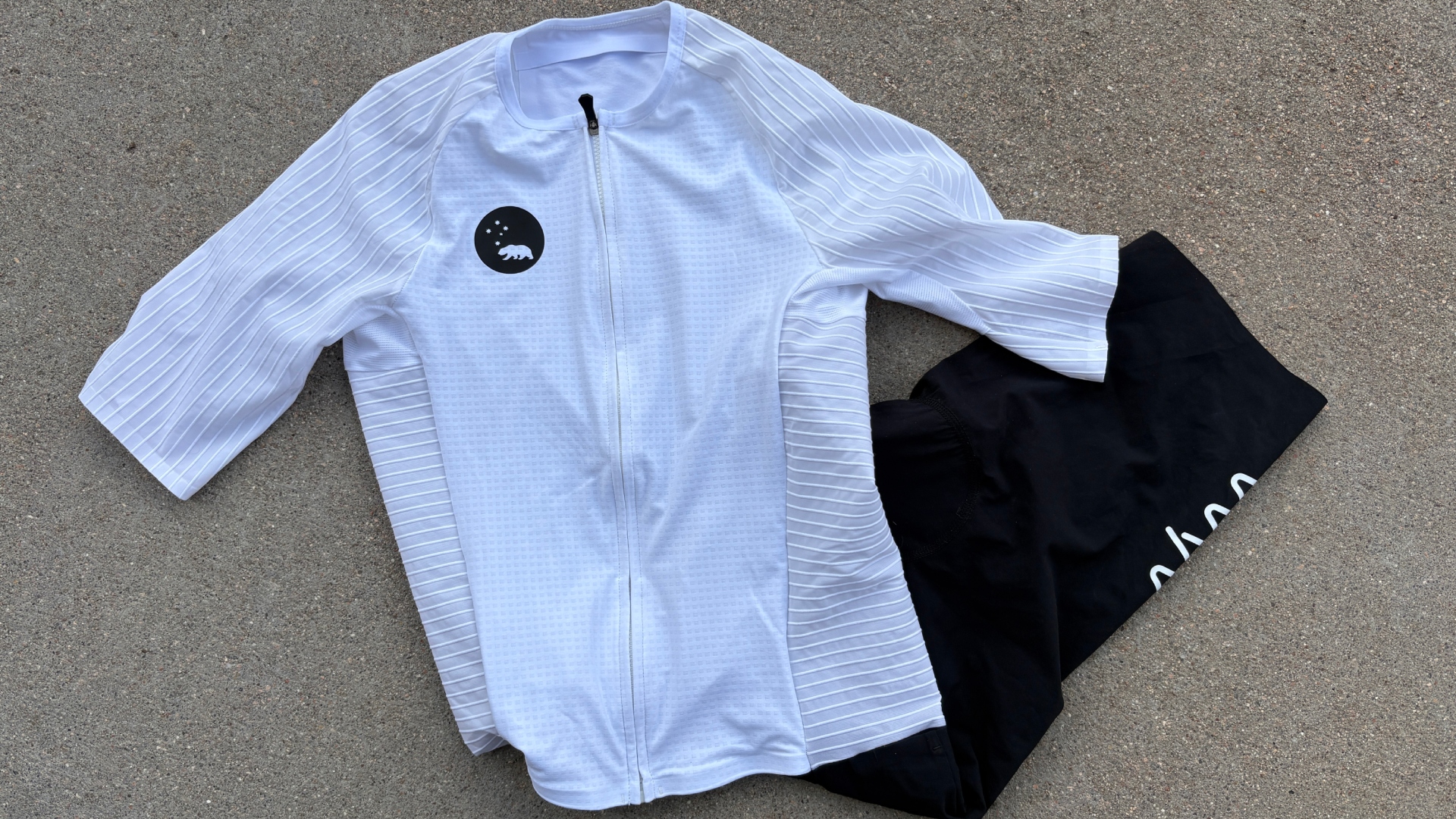Highway to hell: crossing 340-miles of desert in pursuit of a record
London-to-Paris record holder Jonathan Parker set his sights on a far more formidable parcours — the 340-mile highway across China’s ‘Desert of Death’


Three years ago TV daredevil Guy Martin set a new record for cycling the world’s longest desert highway. He clicked off the 340 miles across the Taklamakan Desert in north-western China — AKA the ‘Desert of Death’ — in 28 hours 17 minutes.
Sitting at home watching, barrister Jonathan Parker thought to himself, “I’d like to have a crack at that.”
Just one month earlier, Parker had ridden from London to Paris in a world record time of 12 hours 31 minutes (including the five-hour ferry crossing).
>>> Cycling time trials: how to get started
“Breaking that record was a means to an end of raising money for Cyclists Fighting Cancer,” he tells me over the phone from his home in Qatar, “and it was the same this time: I knew that if I wanted to raise a lot of money, I’d have to do something big.”
Granted, it doesn’t get much bigger than cycling non-stop across a shifting-sand desert the size of Germany.
How much faster does a skinsuit make you?
Get The Leadout Newsletter
The latest race content, interviews, features, reviews and expert buying guides, direct to your inbox!
Parker is a 44-year-old with enviable time trialling palmarès: he has won multiple age-group championships and achieved top-10s in national ‘50’ and ‘100’ championships; before relocating to the Middle East two years ago, he was the man to beat in open TTs in Kent. But riding hundreds of miles non-stop across a desert would require him to develop new depths of endurance — while training in the sweltering heat of Qatar.
“I was going out at 3am, riding in the dark trying to get in six-hour rides. I’d drink up to eight litres of water but still lose two to three kilos in sweat.”
>>> Cycling hydration explained
On the desert highway in China, in cooler conditions, fuelling would be an even greater replenishment battle.
“I knew I’d be burning 850kcal per hour at my target power, but would only be able to take on 360kcal per hour in carbs. That meant I had to improve my metabolic efficiency to utilise my body’s fat stores.”
>>> How to train with a power meter
By early spring 2019, Parker had recruited a support team — friend Shane Guinan as driver, plus two local guides — and he was feeling ready. “A key marker for me was getting to the point where I could hold 300 watts at a heart rate of around 140bpm,” he says. “My coach Matt Bottrill calls it ‘the magic 300’ — the point where you’re cruising along finding it hard to believe you’re at 300 watts because it feels too easy.”
Three-hundred watts too easy? We mere mortals will have to take his word on that.
On the advice of national 12-hour champion Andy Jackson, Parker opted to keep to his standard time trial set-up and build core strength to hold the position indefinitely. Target power was around 250 watts, but with so many unknowns it was impossible to set a precise goal time; suffice to say, Guy Martin’s record was in serious jeopardy. At 7am local time on Wednesday April 24, the attempt began.
On the advice of national 12-hour champion Andy Jackson, Parker opted to keep to his standard time trial set-up and build core strength to hold the position indefinitely. Target power was around 250 watts, but with so many unknowns it was impossible to set a precise goal time; suffice to say, Guy Martin’s record was in serious jeopardy. At 7am local time on Wednesday April 24, the attempt began.
After seven hours, he had sustained 264 watts to average 25.6mph, covering nearly 180 miles. At this rate, a 12-hour record was on the cards — and any notion of stopping for a rest was cast aside.

“In my mind, I wanted to hit 300 miles in 12 hours, which only a handful of people have done. I felt super-strong and knew the next 200km would be with quite a strong tailwind,” he pauses. “But it wasn’t to be.”
On a shifting-sand desert, there is one very obvious, ever-present hazard.
“The winds were very strong,” says Parker, “and I was constantly having to wash sand out of my mouth. Suddenly the wind caught me and pushed me into a patch of sand on the road; the front wheel dug in and I went over the front of the bike. You can see from my Strava file, I was doing 55kph.”
The impact shattered Parker’s collarbone, fractured his kneecap and cracked two ribs. The attempt was over, but an epic extrication mission was only just beginning.
The rough translation of ‘Taklamakan’, from the Uyghur language, is ‘once you get in, you’ll never get out’ — and so it felt to Parker.
“Getting out was a hell of an ordeal. It took five hours to drive the distance I’d cycled in seven — my loose collarbone jumping about over the bumps… The next day we drove 700km [to the airport] and part of the road was closed, meaning we had to do an excruciating 15km off-road.”
Now back home in Qatar, his collarbone plated and pinned, a sore but sanguine Parker reflects on his desert adventure.
“I’ve no regrets at all,” he says. I set out to raise money for children with cancer, and we’ve surpassed the target of £10,000. Yes, of course I’m disappointed I didn’t finish the ride, but breaking the record wouldn’t have raised any more money, it was just a badge for me.”
The backstory: I started cycling to prove I could
Jonathan Parker raised money for Cyclists Fighting Cancer, a charity that provides bikes and trikes to children being treated for cancer, in memory of his parents, both of whom died of the disease, but also because he knows what it’s like to go through life-changing rehab.
“I’ve been through my own mobility issues: in 2002 I fell three floors onto concrete, breaking both my legs. I lost several pints of blood, and it was critical at first — I was in a pretty bad way. Afterwards I was in a wheelchair for a while. But it was part of what got me into cycling in the first place. The consultant told me not to do any sports ever again. Getting into cycling was just to prove him wrong.”
You can donate at: justgiving.com/ fundraising/DesertofDeath

Thank you for reading 20 articles this month* Join now for unlimited access
Enjoy your first month for just £1 / $1 / €1
*Read 5 free articles per month without a subscription

Join now for unlimited access
Try first month for just £1 / $1 / €1

David Bradford is features editor of Cycling Weekly (print edition). He has been writing and editing professionally for more than 15 years, and has published work in national newspapers and magazines including the Independent, the Guardian, the Times, the Irish Times, Vice.com and Runner’s World. Alongside his love of cycling, David is a long-distance runner with a marathon PB of two hours 28 minutes. Having been diagnosed with retinitis pigmentosa (RP) in 2006, he also writes about sight loss and hosts the podcast Ways of Not Seeing.
-
 Save £42 on the same tyres that Mathieu Van de Poel won Paris-Roubaix on, this Easter weekend
Save £42 on the same tyres that Mathieu Van de Poel won Paris-Roubaix on, this Easter weekendDeals Its rare that Pirelli P-Zero Race TLR RS can be found on sale, and certainly not with a whopping 25% discount, grab a pair this weekend before they go...
By Matt Ischt-Barnard
-
 "Like a second skin” - the WYN Republic CdA triathlon suit reviewed
"Like a second skin” - the WYN Republic CdA triathlon suit reviewed$700 is a substantial investment in a Tri Suit, and it is, but you’ll definitely feel fast in it
By Kristin Jenny